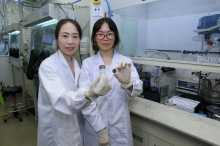The transformation of the Li-ion battery: from flammable organic to aqueous
By EPR Magazine Editorial May 20, 2020 12:18 pm IST
By EPR Magazine Editorial May 20, 2020 12:18 pm IST

A research team led by Prof. Yi-Chun LU from the Faculty of Engineering at The Chinese University of Hong Kong (CUHK) has taken a critical step forward in improving high-energy batteries by introducing a novel electrolyte to the aqueous lithium-ion (Li-ion) battery. This electrolyte is commonly used in skin cream. It is inexpensive, inflammable, less toxic and is eco-friendly, yet can create stable voltage for common usage. The breakthrough was recently published in the world-leading scientific journal, Nature Materials, a sister journal of Nature.
In electronic devices and gadgets such as cell phones and laptops which have improved our daily lives on many levels, you can always find a Li-ion battery. As a result of the rechargeable characteristics and stable energy output, they have become the heart of these electronics. Despite years of research, Li-ion batteries still heavily rely on toxic and flammable organic electrolytes to produce power, and the serious safety hazards remain unsolved. The Samsung smartphone explosions and batteries on fire in a novel Boeing plane are just a few examples. These incidents have indicated that the safety of Li-ion batteries is not yet assured.
In contrast, aqueous Li-ion batteries are non-flammable and because of their water-based electrolyte, they do not pose any significant risks of explosion. However, aqueous Li-ion batteries have been suffering from low energy-density issues due to the low battery cell voltage limited by water stability. Electrolysis will occur and break down water into hydrogen and oxygen when the voltage is over 1.23 Volts, destabilising the battery operation and voltage output. Existing approaches to increase the cell voltage of aqueous batteries often involve the use of a large amount of expensive and toxic Li-ion salts to stabilise water molecules, which raises the issues of cost, toxicity and environmental sustainability.
We use cookies to personalize your experience. By continuing to visit this website you agree to our Terms & Conditions, Privacy Policy and Cookie Policy.